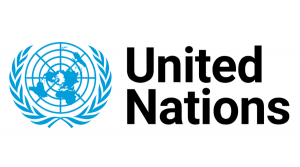
Achieving global nuclear disarmament is one of the oldest goals of the United Nations. It was the subject of the General Assembly’s first resolution in 1946, which established the Atomic Energy Commission (dissolved in 1952), with a mandate to make specific proposals for the control of nuclear energy and the elimination of atomic weapons and all other major weapons adaptable to mass destruction. The United Nations has been at the forefront of many major diplomatic efforts to advance nuclear disarmament since. In 1959, the General Assembly endorsed the objective of general and complete disarmament. In 1978, the first Special Session of the General Assembly Devoted to Disarmament further recognized that nuclear disarmament should be the priority objective in the field of disarmament. Every United Nations Secretary-General has actively promoted this goal.
Yet, today around 12,705 nuclear weapons remain. Countries possessing such weapons have well-funded, long-term plans to modernize their nuclear arsenals. More than half of the world’s population still lives in countries that either have such weapons or are members of nuclear alliances. While the number of deployed nuclear weapons has appreciably declined since the height of the Cold War, not one nuclear weapon has been physically destroyed pursuant to a treaty. In addition, no nuclear disarmament negotiations are currently underway.
Meanwhile, the doctrine of nuclear deterrence persists as an element in the security policies of all possessor states and many of their allies. The international arms-control framework that contributed to international security since the Cold War, acted as a brake on the use of nuclear weapons and advanced nuclear disarmament, has come under increasing strain. On 2 August 2019, the United States’ withdrawal spelled the end of the Intermediate-Range Nuclear Forces Treaty, through with the United States and the Russian Federation had previously committed to eliminating an entire class of nuclear missiles. On the other hand, the extension of the Treaty between the United States of America and the Russian Federation on Measures for the Further Reduction and Limitation of Strategic Offensive Arms (“new START”) until February 2026 has been welcomed by Member States and the Secretary-General of the United Nations.This extension provides an opportunity for the possessors of the two largest nuclear arsenals to agree to further arms control measures.
Frustration has been growing amongst Member States regarding what is perceived as the slow pace of nuclear disarmament. This frustration has been put into sharper focus with growing concerns about the catastrophic humanitarian consequences of the use of even a single nuclear weapon, let alone a regional or global nuclear war.
The General Assembly commemorates 26 September as the International Day for the Total Elimination of Nuclear Weapons. This Day provides an occasion for the world community to reaffirm its commitment to global nuclear disarmament as a priority. It provides an opportunity to educate the public – and their leaders – about the real benefits of eliminating such weapons, and the social and economic costs of perpetuating them. Commemorating this Day at the United Nations is especially important, given its universal membership and its long experience in grappling with nuclear disarmament issues. It is the right place to address one of humanity’s greatest challenges; achieving the peace and security of a world without nuclear weapons.
In accordance with General Assembly resolution 68/32 and subsequent resolutions, the purpose of the International Day is to further the objective of the total elimination of nuclear weapons through enhancing public awareness and education about the threat posed to humanity by nuclear weapons and the necessity for their total elimination. In so doing, it is hoped that these activities will help to mobilize new international efforts towards achieving the common goal of a of a nuclear-weapon-free world.





